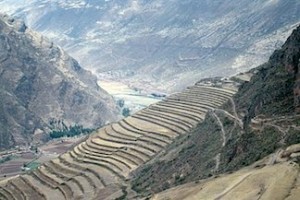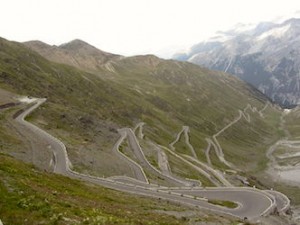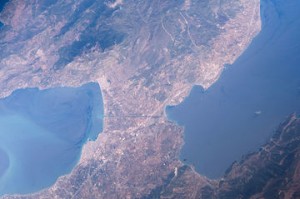My family goes to a lot of movies. None of us are film buffs or anything like that, and I can’t say I’ve ever watched any of those film award shows, but we do end up going to the movies quite a bit. I’m nowhere near as knowledgeable about film technology as I am about ramps, but I do like to read about it.
 One of my favorite movies from the last decade or two was that King Kong remake. The big ape himself is done pretty spectacularly by a fellow named Andy Serkis, using motion capture.
One of my favorite movies from the last decade or two was that King Kong remake. The big ape himself is done pretty spectacularly by a fellow named Andy Serkis, using motion capture.
The way they do it is pretty nifty: they first put Serkis in this weird, full-body suit, made of latex or something like it. His face is then covered with a clear plastic mask filled with little holes. They mark his face with little dots through all the holes before removing it.
The little dots also cover his body suit. They film him moving around and doing his scenes. Then, in the computer, they use those little dots as…well, anchors, essentially, in order to layer the CGI over Serkis. They then build up the character using the dots and the framework between them, rather than animating the whole shebang themselves.
 There are a lot more dots on the face, too; that part is harder to animate, so it needs a lot more detail. It still takes a ton of work. Movies are just crazy expensive for a good reason, and not just because of the huge paychecks the actors get. There is a ton of work and expense put into it.
There are a lot more dots on the face, too; that part is harder to animate, so it needs a lot more detail. It still takes a ton of work. Movies are just crazy expensive for a good reason, and not just because of the huge paychecks the actors get. There is a ton of work and expense put into it.
King Kong isn’t the only motion capture character Serkis does, either: he did Gollum from The Lord of the Rings movies, and the main ape from the new Planet of the Apes movies, too, though I never saw those. (I never liked the original too much, mostly thanks to Charlton Heston. He’s an overacting ham. Now, if Planet of the Apes had had, say, Clint Eastwood…)
The technique has definitely evolved quite a bit since King Kong, but I don’t think I’ll ever be able to just dismiss old technology as boring. In fact, it’s often much more interesting.
 The ancient Greeks recognized three simple machines to start with: the lever, the screw, and the pulley. The man who came up with the idea, Archimedes, was a brilliant but crazy guy. Built crazy ancient super weapons to sink entire enemy fleets one day, then jury rigged an ancient precursor to calculus the next. He’s considered one of the greatest mathematicians of all time for a good reason. He’s the kind of dude who could have moved the world, if you gave him a long-enough lever.
The ancient Greeks recognized three simple machines to start with: the lever, the screw, and the pulley. The man who came up with the idea, Archimedes, was a brilliant but crazy guy. Built crazy ancient super weapons to sink entire enemy fleets one day, then jury rigged an ancient precursor to calculus the next. He’s considered one of the greatest mathematicians of all time for a good reason. He’s the kind of dude who could have moved the world, if you gave him a long-enough lever. Terraces might be something of an opposite of ramps, but that just makes them more fascinating. Living among some of the steepest mountains in the world, the Incans had to improvise heavily when it came to all sorts of facets of their life. Their terraces did a lot more than provide flat areas for food production (though don’t get me wrong: that was just a little bit important); they also helped to control erosion and landslides.
Terraces might be something of an opposite of ramps, but that just makes them more fascinating. Living among some of the steepest mountains in the world, the Incans had to improvise heavily when it came to all sorts of facets of their life. Their terraces did a lot more than provide flat areas for food production (though don’t get me wrong: that was just a little bit important); they also helped to control erosion and landslides. The most famous are almost certainly the rice terraces of the Philippine Cordilleras: they’ve actually been declared a UNESCO heritage site. You’ve almost certainly seen images of them before. They’ve been farmed continuously for something like 2000 years, which is absolutely crazy. That’s not just architecture, it’s a way of life.
The most famous are almost certainly the rice terraces of the Philippine Cordilleras: they’ve actually been declared a UNESCO heritage site. You’ve almost certainly seen images of them before. They’ve been farmed continuously for something like 2000 years, which is absolutely crazy. That’s not just architecture, it’s a way of life. One of the craziest examples of the breed is the
One of the craziest examples of the breed is the  The Diolkos, built by the ancient Greeks, was half ramp, half causeway. It was used to transport ships across the Ithmus of Corinth, saving them a dangerous sea voyage. The ancient Greeks actually dragged the ships overland on it. (You’d think a canal would be easier to use, but canals are a lot harder to build and maintain.) Huge teams of men and oxen would have pulled the boats and cargo across it in about three hours per trip.
The Diolkos, built by the ancient Greeks, was half ramp, half causeway. It was used to transport ships across the Ithmus of Corinth, saving them a dangerous sea voyage. The ancient Greeks actually dragged the ships overland on it. (You’d think a canal would be easier to use, but canals are a lot harder to build and maintain.) Huge teams of men and oxen would have pulled the boats and cargo across it in about three hours per trip.